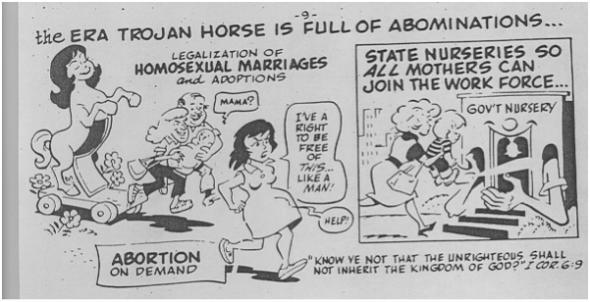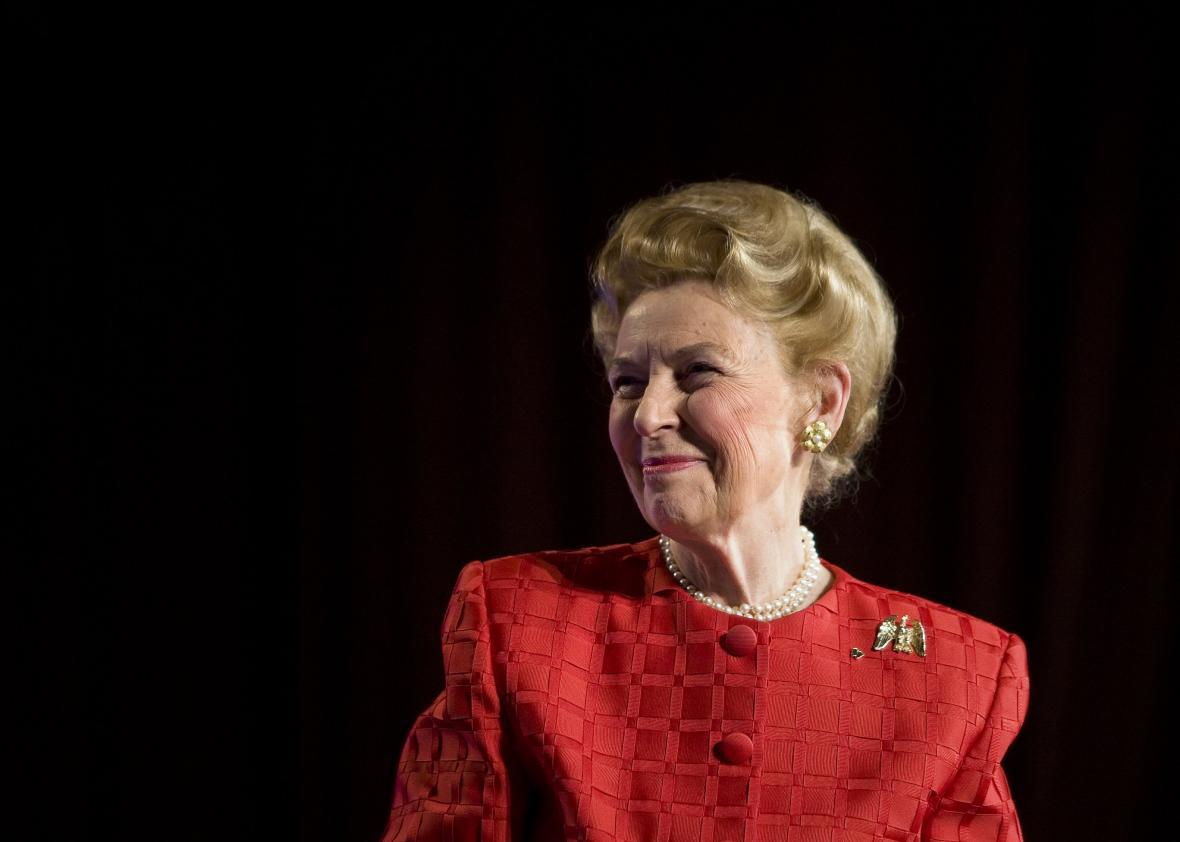While many obituaries for Phyllis Schlafly, who died Monday, Sept. 5, at the age of 92, have spotlighted her vital role in opposing the Equal Rights Amendment, she is also notable for having brought anti-gay activism to the center of the modern conservative movement. Before Anita Bryant launched Save Our Children, her 1977 campaign against gay rights, and before the Rev. Jerry Falwell’s Moral Majority issued its “Declaration of War” against homosexuality, Schlafly created much of the architecture for conservative anti-gay activism.
After the U.S. Senate passed the ERA in 1972, it turned the amendment over to the states for ratification. Both the Republican and Democratic parties endorsed the measure, and by 1973, 28 states had ratified it. The success of the ERA seemed all but assured until the ratification process stalled and then failed after meeting fierce resistance from a grass-roots coalition of anti-ERA activists led by Schlafly.
Anti-gay rhetoric was central to Schlafly’s anti-ERA campaign, and it allowed her to bring together a variety of groups that were united in their opposition to homosexuality. A staunch Catholic, Schlafly innovatively drew from different conservative and religious traditions to build a multifaith and geographically diverse coalition. Drawing from longstanding opposition to racial integration, interracial marriage, and mixed-race families, her pamphlets and articles transposed racial rhetoric onto fears of homosexuality. She frequently associated the ERA with the dangers of “sex mixing,” “homosexual marriage,” and the threat of “homosexual schoolteachers.” As early as 1973, she warned that the ERA “would legalize homosexual marriages and open the door to the adoption of children by legally married homosexual couples.” The ERA would enable these gay rights, she said, because any “law that defines a marriage as a union of a man and a woman would have to be amended to replace those words with ‘person.’ ”
Schlafly’s newsletters, the Phyllis Schlafly Report and the Eagle Forum, regularly published cartoons depicting gay and lesbian marriages, images that showed men dressed as women or women dressed as men. Gender anarchy and sexual anarchy went hand-in-hand for Schlafly. Her 1977 book, The Power of the Positive Woman, compiled these anti-gay ideas and exclaimed that “firemen, who constantly risk their lives in our behalf, should have the right to make a judgment that their close living and working conditions make a homosexual co-worker intolerable.”

Courtesy of the Hall-Hoag Collection of Extremist and Dissenting Printed Propaganda, John Hay Library, Brown University
Schlafly’s followers glommed on to this rhetoric; writing countless letters to politicians, warning that the ERA would validate homosexuality. And as gay rights legislation and gay activism became more visible nationwide, Schlafly spawned countless imitators who took up her ideas against gay rights activists. Schlafly had already asserted that the ERA would “interfere with the right of parents to have their children taught by teachers who respect the moral law” when Anita Bryant and California’s John Briggs began their respective campaigns. In other words, Schlafly’s pro-family position represented what would become the core ideology of social conservatives: privileging the rights of heterosexual Christian parents over any other social groups and viewing any deviation from this model as a political threat. The template she created in the 1970s continues to be used by opponents of same-sex marriage today.
Schlafly continued to oppose gay rights and gay marriage. She described Surgeon General C. Everett Koop’s 1988 AIDS education program as “the teaching of safe sodomy,” and her group the Eagle Forum linked the ERA with the danger of AIDS by claiming that if sex equality became law, it would threaten countless lives. Her newsletter asked: “Would police, paramedics, dentists, health personnel and morticians be permitted to take adequate precautions to defend themselves against AIDS and other homosexual diseases? Could we restrict homosexuals from working in the food handling business, such as restaurants and as flight attendants on airlines?” Even after a New York-based gay magazine made national news by outing her son John in 1992, she maintained her opposition to gay marriage, describing it as opposed to traditional American values and institutions.
It is no small irony that many of the things Schlafly railed against during her life—gay marriage, women in the military, abortion rights, no-fault divorce—succeeded, even though the ERA has yet to be ratified.
